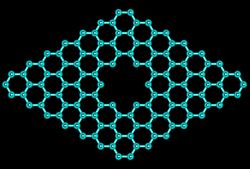Metal-free catalysts in the place of metal-based catalysts
The EU-funded project FREECATS (Doped carbon nanostructures as metal-free catalysts) aimed to make the production of chemicals and commodities greener and thus more sustainable. Ten European research institutions worked together to develop carbon-based materials that will replace metals in catalysis. Catalysis is one of the major consumers of precious metals, like palladium and platinum. Many process industries rely on noble metal-based catalysts to speed up reactions and improve yields. However, platinum group metals are not generally found in Europe, pushing researchers to look for a more abundant option. Carbon-based catalysts may be just what chemical processing industries are looking for. This new type of metal-free catalysts can be less polluting thanks to their higher selectivity. In other words, the risk of creating unwanted waste products that may also be harmful to the environment is significantly reduced. FREECATS focused on the development of catalysts for fuel cells, olefin production and water treatment. Replacing platinum-based catalysts in these three technologies will lead to a significant reduction in the high demand in Europe – in particular, the automotive industry's demand. Noble metal catalysts are commonly used in the automotive industry, where catalytic converters based on platinum group metals scrub exhaust gases clean. This could be a unique opportunity for a non-metal alternative, but project partners were not looking for applications of carbon catalysts in this area. Using nanotechnology, with atoms as building blocks, the researchers built carbon structures either in the form of bulk nanomaterials or hierarchically organised structures. The new carbon materials are nanotubes or nanofibres doped with substances to change their electron density. Most commonly studied carbon materials were doped with nitrogen and exhibited markedly different catalytic activity from their undoped counterparts. But, boron and phosphorous could also be used, depending on the nature of the chemical reaction being catalysed. The researchers looked into applications in future car designs. Specifically, the carbon catalysts could be utilised in fuel cells, generating energy through the reaction of oxygen and hydrogen. Oxygen reduction is currently achieved with help from platinum catalysts, but carbon catalysts could also catalyse this reaction. The second application with massive potential is in the production of olefins. These are widely used in the chemicals industry as the precursors of commodity polyolefins polyethylene and polypropylene. The new catalysts are highly selective, producing more of the desired compound and fewer unwanted by-products. Potential applications of the new catalysis technology are also foreseen in water treatment, as drinking water volumes would be greater. By the time FREECATS came to an end, the researchers had demonstrated the capabilities of carbon catalysts at pilot-plant level. For FREECATS' new metal-free catalysts, it was not enough to compete with existing noble metal-based catalysts, widely considered as the backbone of many industries. A series of follow-up research activities have focused on improving their performance further.
Keywords
Metal-free catalysts, nanotechnology, FREECATS, carbon nanostructures, catalysis







